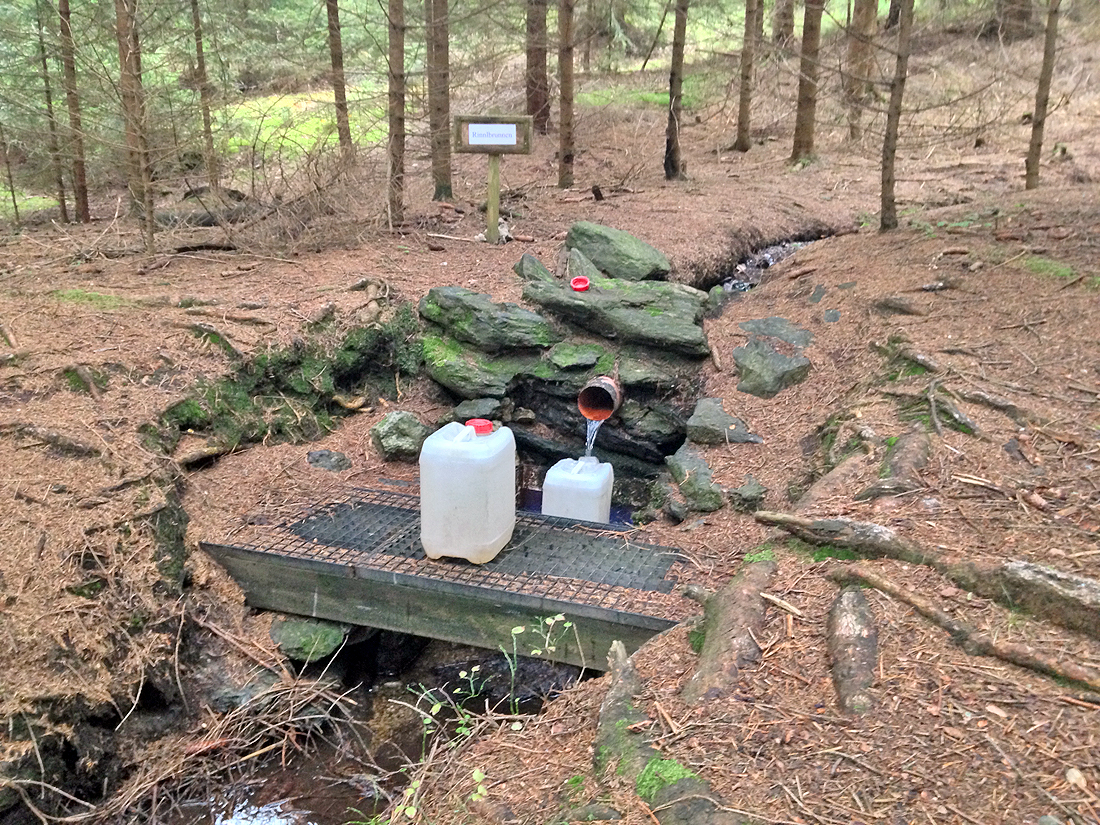The small babbling streamlet rises only 30 meters higher, in the middle of the forest, at the so called “Rinnlbrunnen” (Rinnl well). Its source is one of the highest located springs of the whole ridge.
In the Vienna State Treaty of 26 June 1862 it is described that “on the Tillenberg mountain the borderline was corrected from the Rimmelbrunnen to the Königsstein”. There were two areas in the forest of Eger. One started on the western slope of the “Tillenberg” mountain close the “Königsstein”, the latter already then representing a very important natural boundary stone. The other ended not far from the “Rinnlbrunnen”. There was no other spring in the whole “Fraisch” region with nearly the same name, so one can assume that this spring was meant in the Treaty.
So one can say that the spring and the streamlet have historic significance as a centuries-old boundary mark between two territories, similar to the “Rainbuche” tree or the Königsstein. The furrow (Rinne) as well as the strip (Rain) of about 300 meters length and 10 to 20 meters width were part of the “Fraisch” region, limited to the north by the territory of the monastery of Waldsassen and, after the secularization of Bavaria, to the south by the territory of the town of Eger.
The “Rinnl” got its name of the German words “Rinne” and “Rain” and also lent its name to the rock formation of the “Ringelfelsen” (Rinnl rock).


